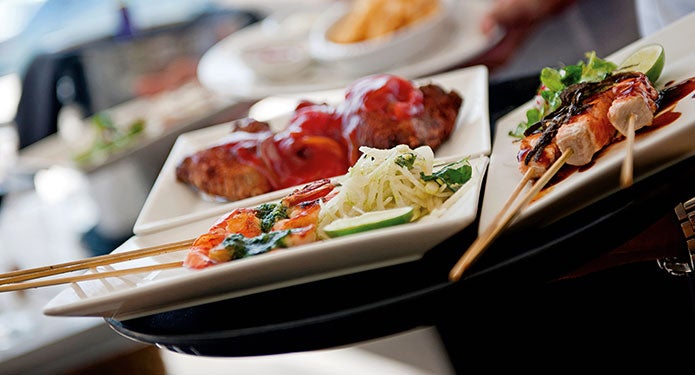Can’t afford to offer customers many choices? You can’t afford not to.
Today’s restaurant patrons, particularly millennials, expect variety, more choices, customization, and the ability to personalize their dining experience.
Those expectations have led McDonald’s, the world’s largest restaurant chain and Wendy’s to test market custom burgers in select North American locations. Analysts say these moves are a direct response to the success of fast-casual chains like Chipotle and Subway, which have stolen market share from quick-service restaurants (QSRs). This is largely because they empower customers to tailor their meals from a wide selection of fresh, high-quality ingredients.
If you think you needn’t pay attention to customization because you’re not a QSR or fast-casual restaurant, think again, maintains Mary Chapman, Director of Product Innovation at the research firm Technomic Inc. “This is a large shift in consumer preferences and it’s going to continue,” Chapman says. “In fact, it will only increase.”
Bonnie Riggs, Restaurant Industry Analyst for the market-research firm The NPD Group, concurs. “Consumers want choices in ingredients, healthy options, portion sizes, and pricing,” Riggs says. “And our studies show that if consumers don’t get what they want, they’ll walk.”
What does this shift in demand mean to commercial foodservice?
“An increasingly small number of operators can get away with no-substitution policies,” says Gordon Food Service Commercial Customer Success Director Bill Balke. “Today’s customers expect you to do virtually anything they want. The good news is they’re willing to pay extra.”
Meeting consumer demand
The following are effective ways to add customization to your menu:
Build your own. Build-your-own menus are the hallmark of the fast-casual segment, such as Five Guys Burgers and Fries and your neighbourhood pizza joint. Olive Garden has adapted it to the casual segment, letting patrons build a meal by choosing among multiple pastas and sauces. See if your menu lends itself to this approach, even if it’s only a salad or two.
Mix and match. Casual-dining chains have embraced this concept, allowing guests to choose meal combinations. Chili’s “Southwest Pairings” menu lets diners create combinations of two or three dishes from among 10 selections. Consider downsizing some popular items and offering them on a mix-and-match menu.
Portion sizes. Most emphasis lately has been on smaller portions to satisfy lighter appetites and combat rising food prices. But big can also be a draw: bigger burgers, hot dogs, snacks, or plates for sharing … all at a bigger price.
Sharing plates. The shared-plates trend empowers diners to forgo the standard appetizer-entrée-dessert formula and create their own dining experience. Just remember that “sharing” doesn’t mean “small.” It’s all about bigger flavours, more variety, and expanded opportunities.
Healthy options. Diet restrictions are a driver of the customization trend, Chapman says. More customers are seeking low-fat, low-salt, vegetarian, gluten-free, grilled, and other health-conscious choices. If you are willing and able to make healthy substitutions in your recipes, be overt about it on your menu and make sure your servers communicate it.
Blurred dayparts. Traditional dayparts are evolving into eating occasions that occur throughout the day. Patrons want breakfast during the dinner hour, shared-plates at lunch, and snacks all day long. Can you be this flexible?
Beverages. Starbucks, which once boasted 87,000 drink combinations, raised the bar for beverage customization. Now customers want to personalize sodas, juices, teas, and cocktails in addition to coffee. Seizing this high-profit opportunity is can be as simple as adding a shot of flavoured syrup to coffee, tea, and mixed drinks.
Proceed, but with caution
While most operators can benefit from offering expanded customization options, there are a number of caveats to consider:
Too much choice. A Columbia University study showed consumers can be overwhelmed when offered too many choices. Researchers found that grocery shoppers were much more likely to purchase a jar of jam when offered a choice of six flavours rather than 24.
Unfortunately, there’s no magic number of choices in the restaurant business. “Decide how many choices are enough based on your concept and your market,” Balke says.
The wrong choice. Too many restaurants’ customizable offerings are driven by operator needs rather than customer desire, maintains Riggs. “We really need to understand what customers are looking for.”
The smart choice. Context is everything, Chapman contends, arguing that operators must offer customization in ways that support their brand. If your brand is speed and consistency, should you offer customization? Some customers might be happy to wait a little longer for a burger without pickles, but those behind them may not.
This is why it’s so important to thoroughly assess about your operation’s capabilities. “Customization can be a real challenge for kitchens,” Balke says. “Make sure you can deliver before it’s on your menu. The worst thing you can do is offer it and then take it back because it’s too complicated or time-consuming for your kitchen staff.”

























